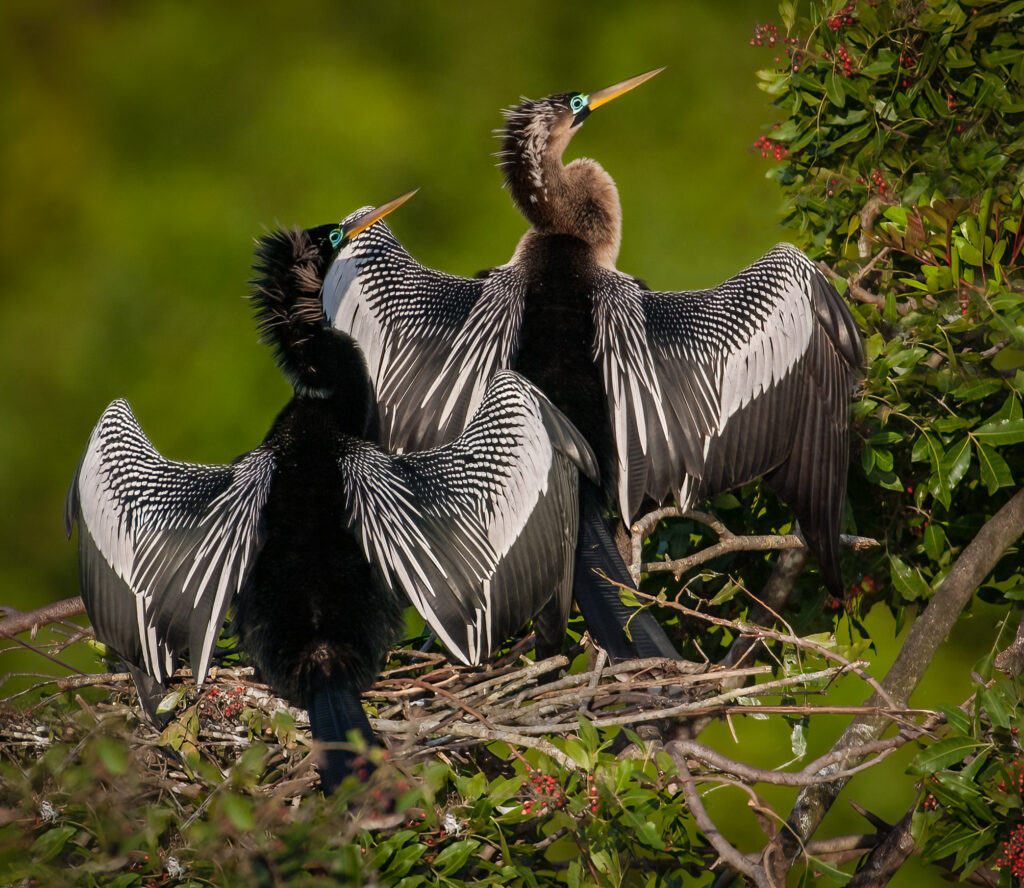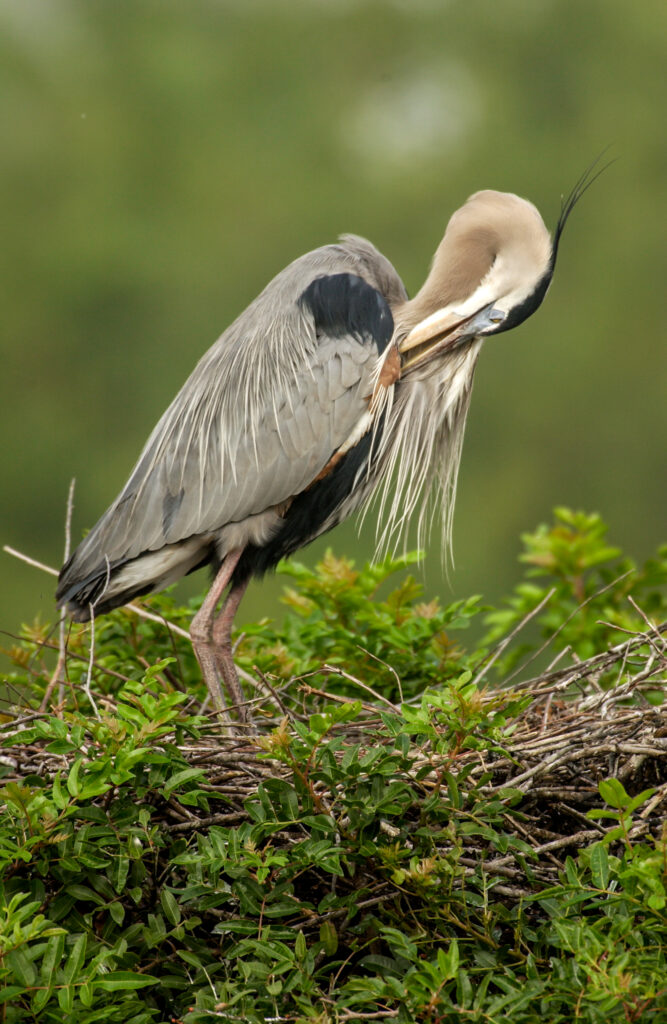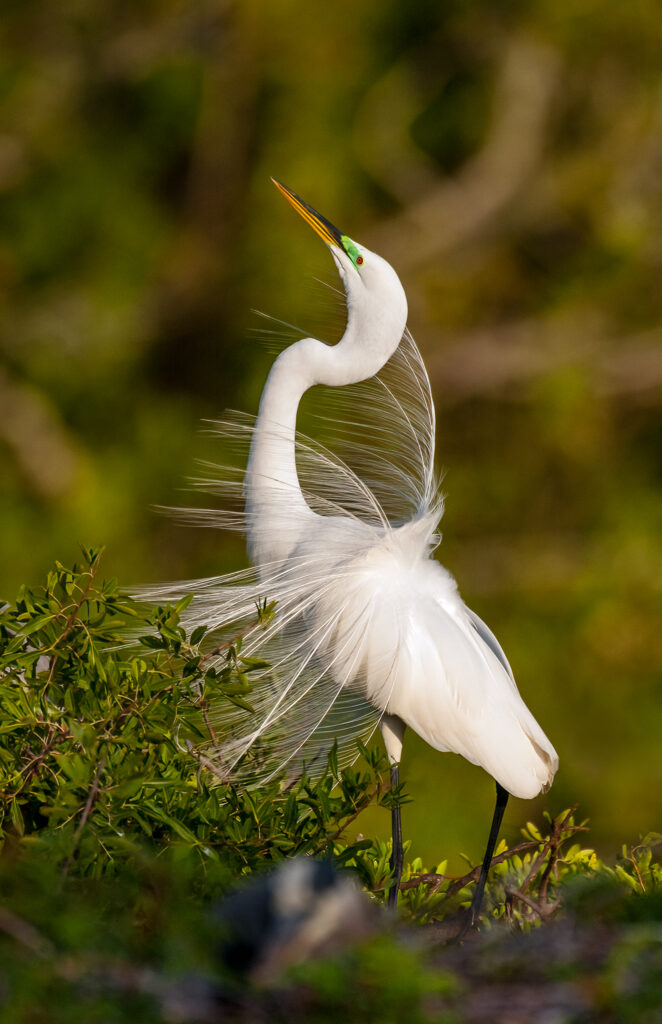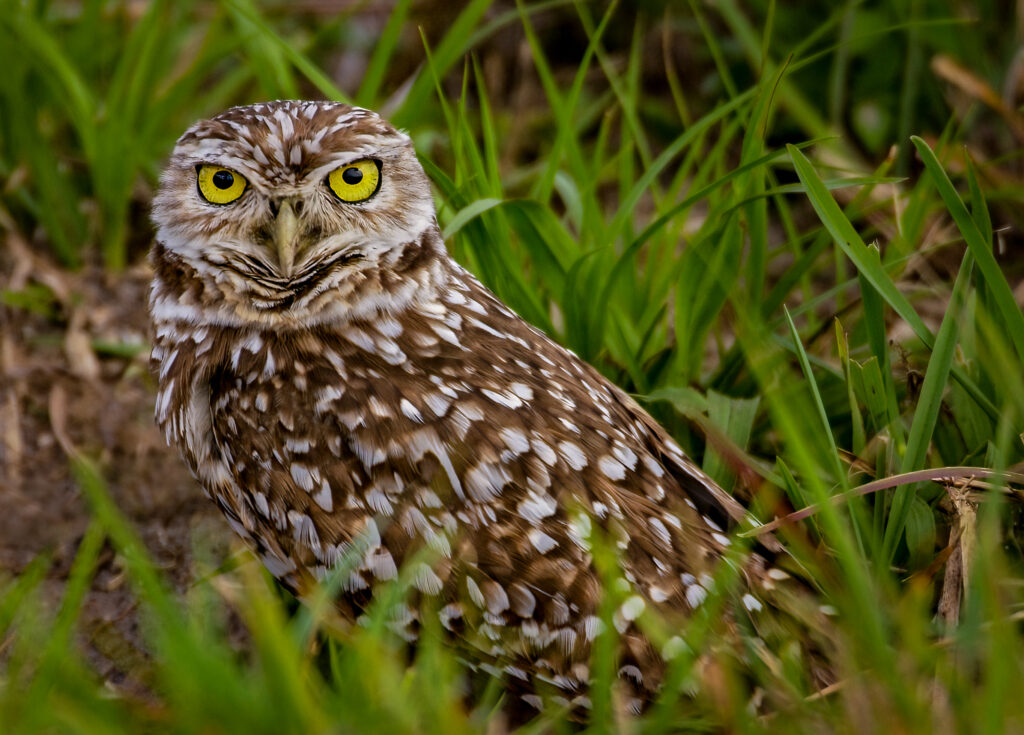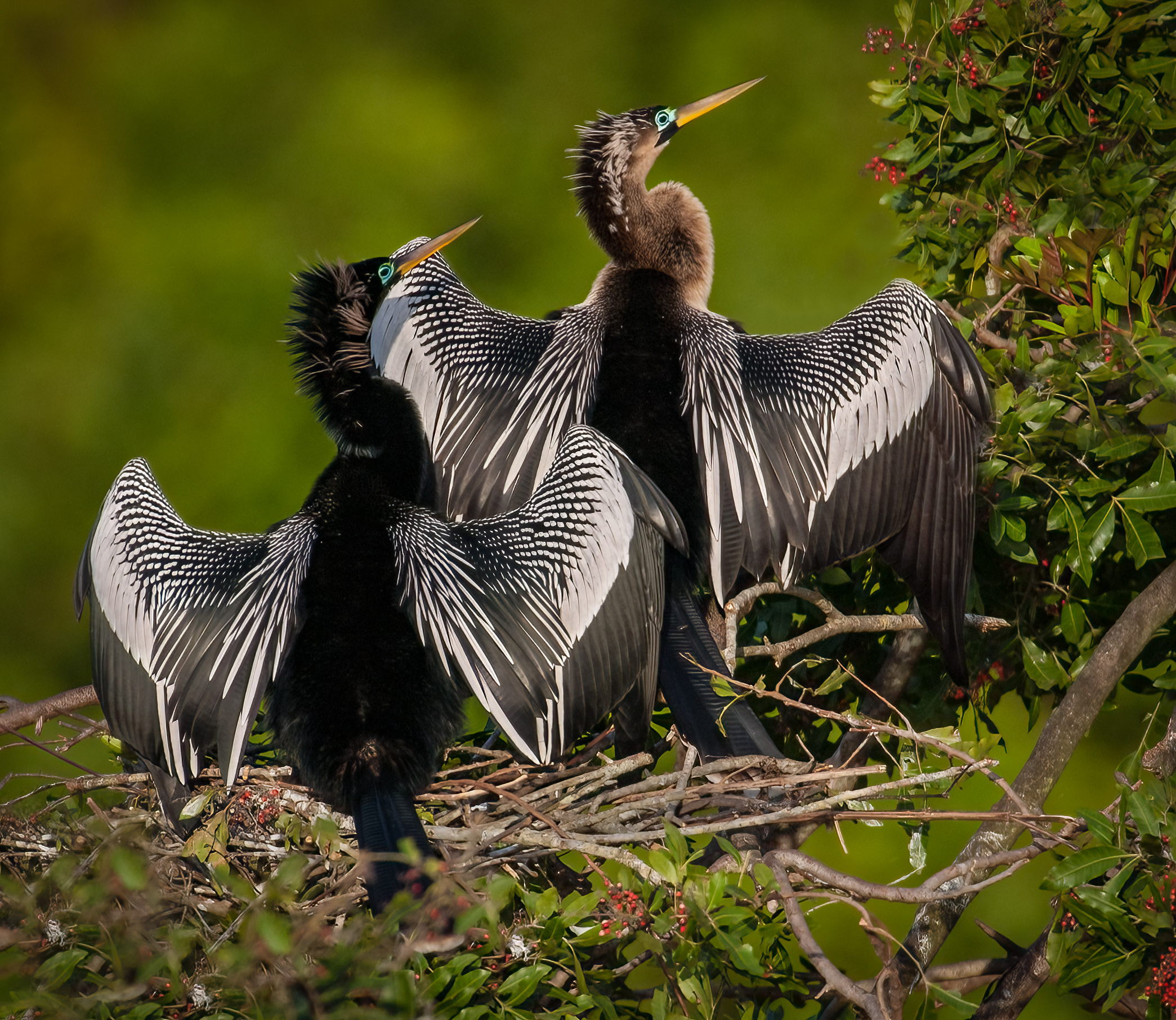
The Venice Area Audubon Rookery attracts over 13 different species of long-legged wading birds annually for nesting and roosting from December through May, along with birders and professional photographers alike looking to photograph these beautiful birds.
The Venice Area Audubon Rookery is located downtown Venice, Florida, just a quarter mile from S. Tamiami Trail (US 41 highway) and often overlooked due to its location but it’s not to be ignored – the Venice Area Audubon Rookery is internationally known! It is frequently visited by first time bird watchers and photographers. This small site has become a mecca for bird photography.
The Venice Area Audubon Rookery is a small island in the middle of a stormwater pond with native plants and vegetation surrounding it. The small island is protected by some unexpected natural predators, local alligators also living in the stormwater pond. They live and act as a natural barrier for the species of birds nesting and roosting on the island. The surrounding landscape offers a covered pavilion for birders, nature photographers and other visitors looking for shade.
Frequent species at the Venice Area Audubon Rookery
Little Blue Herons, White Ibises, Snowy Egrets, and Tricolored Herons gather in numbers to the island each evening around sunset to roost for the night and it is quite a sight! There are several species of birds that roost and nest in harmony here on the small island. Though during the nesting months, you will find Anhingas, Great Egrets, and Great Blue Herons taking up most of the nests for the breeding period.
The Great Blue Heron is the largest heron found in Florida and measures 42-52 inches high. It nests from November through May and is a highly adaptable bird with breeding habitats, for most colonies, within 5 miles or less of their feeding areas. Most of these feeding and breeding areas are in isolated swamps, islands or near lakes and ponds bordering forests and greenery. It nests on the ground, bushes, mangroves, artificial nest platforms but mainly in trees. Its diet consists of fish, frogs, crustaceans, turtles, snakes, insects, rodents, and anything within striking distance. Their population declined in some parts of southern Florida due to elevated mercury levels in local waterways, though sites like the Venice Area Audubon Rookery are a perfect and safe place to roost and nest in Florida.
The Great Egret is found year-round in Florida and once was a critically endangered species but is now a protected species that has increased in its population size. The Venice Area Audubon Rookery preserved nesting site, along with others alike, have helped greatly with these numbers. Breeding for the Great Egret is from January to early summer. They also roost and nest in mixed-species and are often the first to arrive! It is known that their presence induces nesting among other species of birds. A sign of a breeding Great Egret is its bright green patch located between the base of its bill and eye. Another distinctive feature of theirs during the breeding season are their aigrettes. Aigrettes are long plumes that grow from its back that have stiff quills. These plumes reach full development during courtship and can grow as many as 50 plumes measuring up to 50 cm long that extend 10cm past their tail. They are fanned during courtship.
The Anhinga nests from March through June and is found year-round in Florida. In sub-tropical and or tropical latitudes, breeding can happen throughout the year and can be triggered by wet or dry seasons. They typically nest in loose groups of up to several hundred, sometimes with other waterbird colonies. At the Venice Area Audubon Rookery, Anhingas nest with Herons and Egrets. Their preferred habitats include shallow coastal bays, lakes, swamps, lagoons and marshes with shrubs and trees with a preference of freshwater and coastal aquatic habitats. These habitats allow them to stalk prey but also allow them to seek shelter when in danger. They are not fast swimmers.
My First Birding Trip
One of my first trips as a birder and nature photographer was to the Venice Area Audubon Rookery in 2003 with Moose Peterson. As we drove up to the site, it was pitch black and very noisy. The cacophony of all the screaming, screeching, nesting birds was deafening. We arrived before sunrise to prepare. We were not alone and as we got closer to the viewing area, we were met with birders and photographers alike lined up with their tripods, long lenses, and gear ready for the sunrise. The island is close enough to the viewing area that you will be able to spot the many birds nesting on the island without binoculars, but I would recommend them for better viewing. You will find nests filled with chicks of different stages of development and species right next to one another in one location during the breeding season. At the time, and as my first trip birding, I vividly recall the hundreds of clicks of cameras going off as a single bird would flap its wings. My first camera, the Nikon D1 only allowed up to 10 images per burst. I recall having to stop shooting often since my buffer did not allow me to continue. Today, the Nikon D6 has a buffer of nearly 200 photos which eliminates this problem altogether. Viewing around sunset also brings in spectacular views of birds returning to their nests for the night. While at the Venice Area Audubon Rookery, I was able to photograph the Great Blue Heron, Great Egret, Anhinga, Cattle Egret, and the Burrowing Owl.



